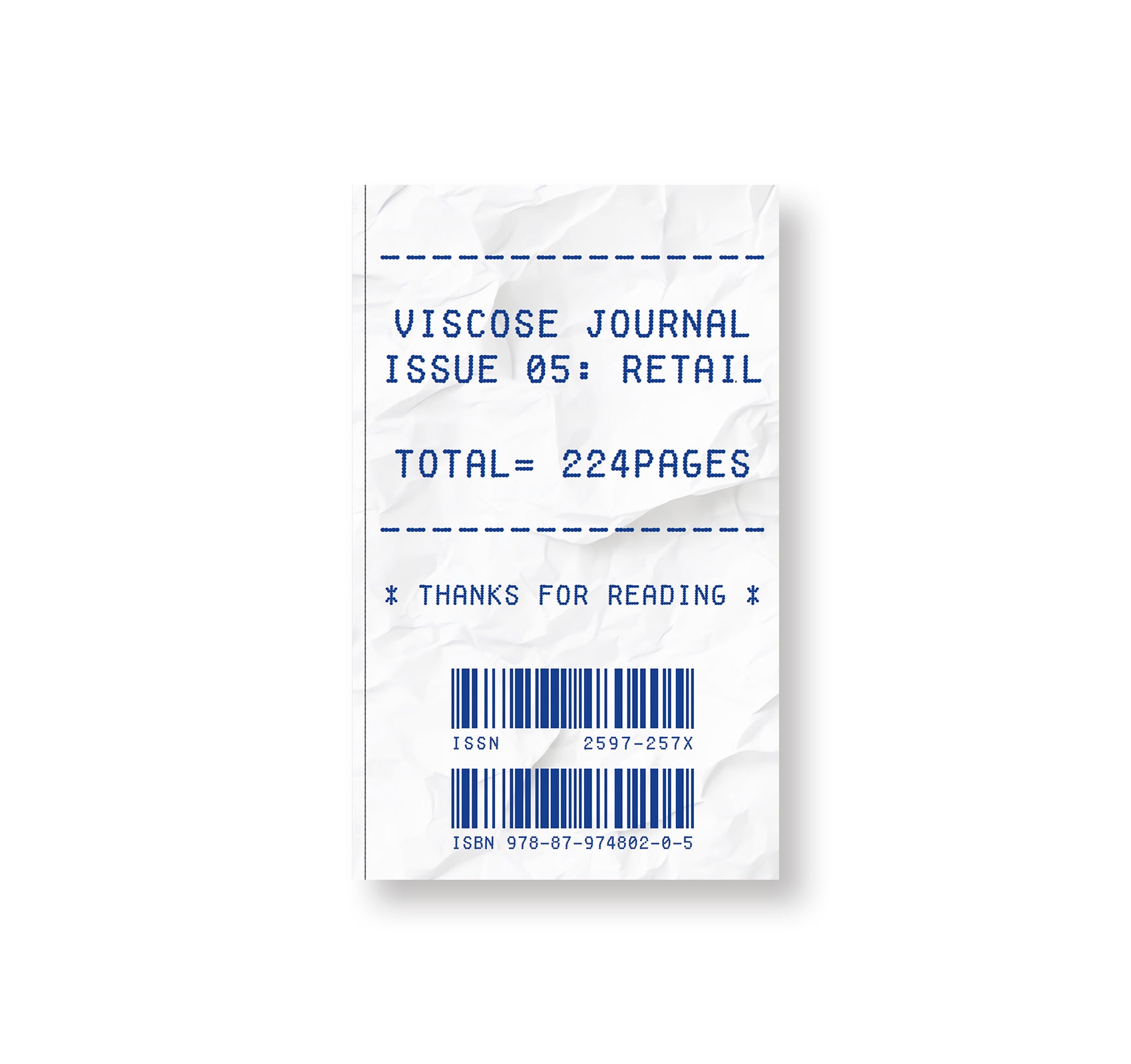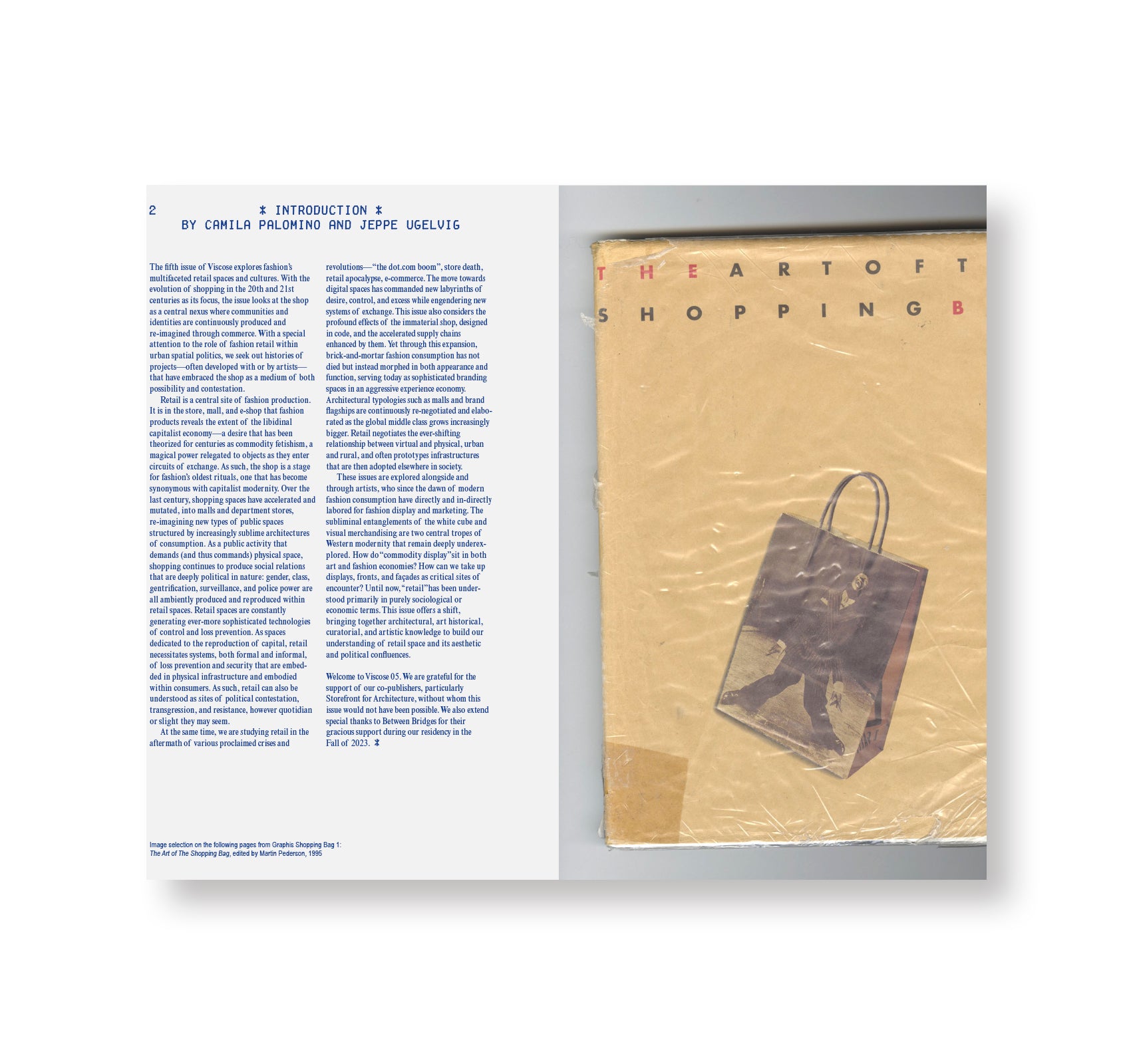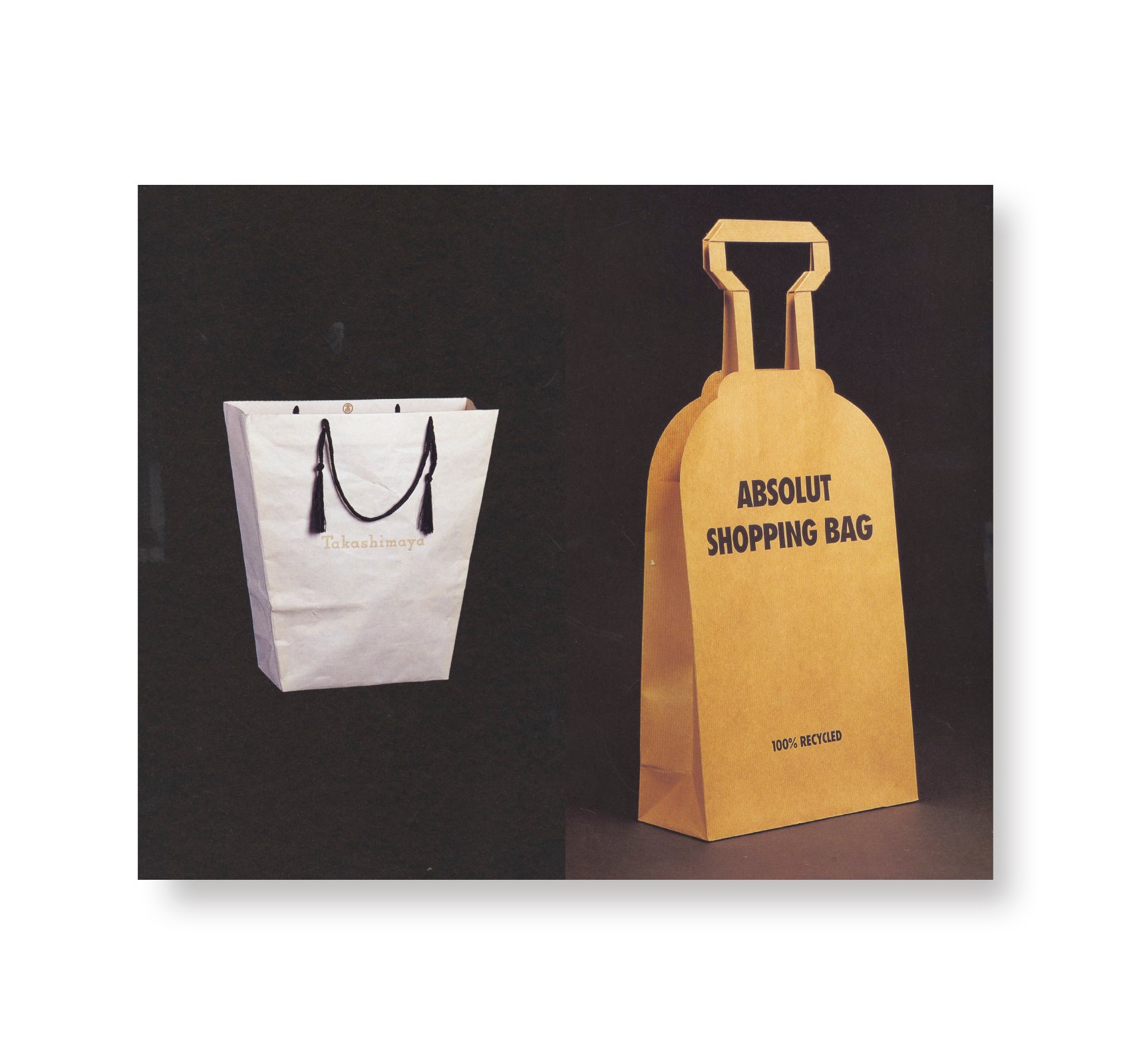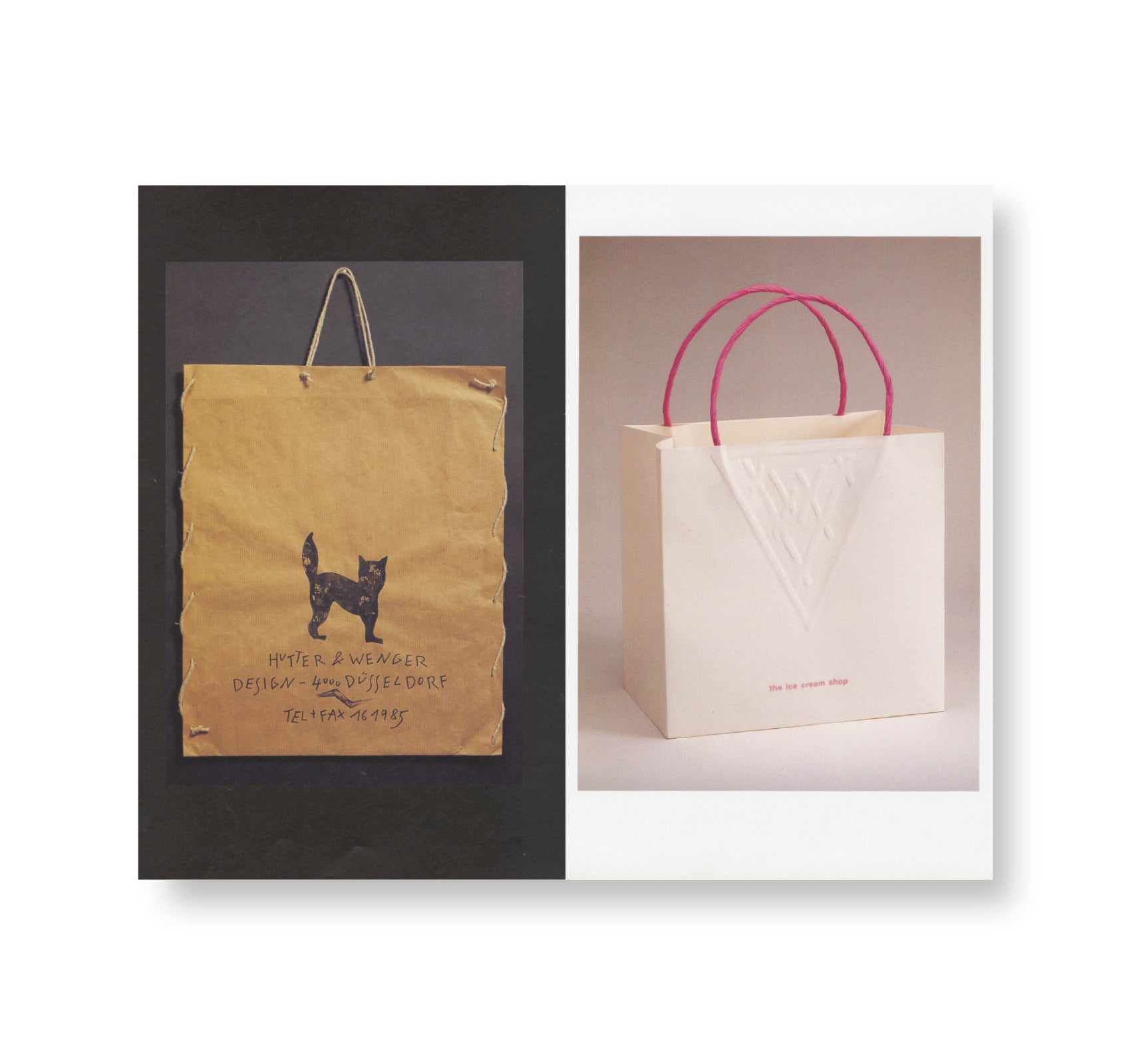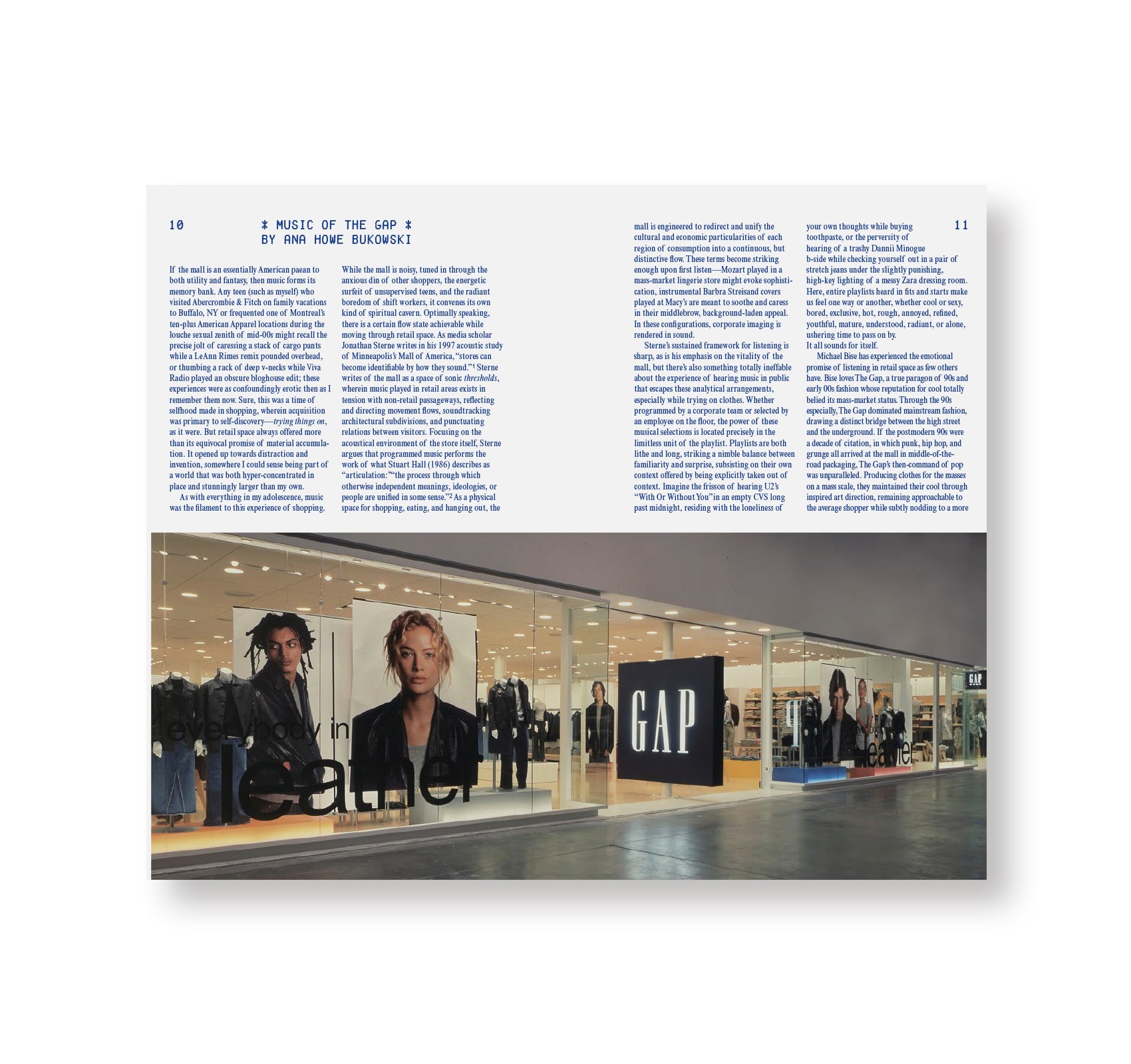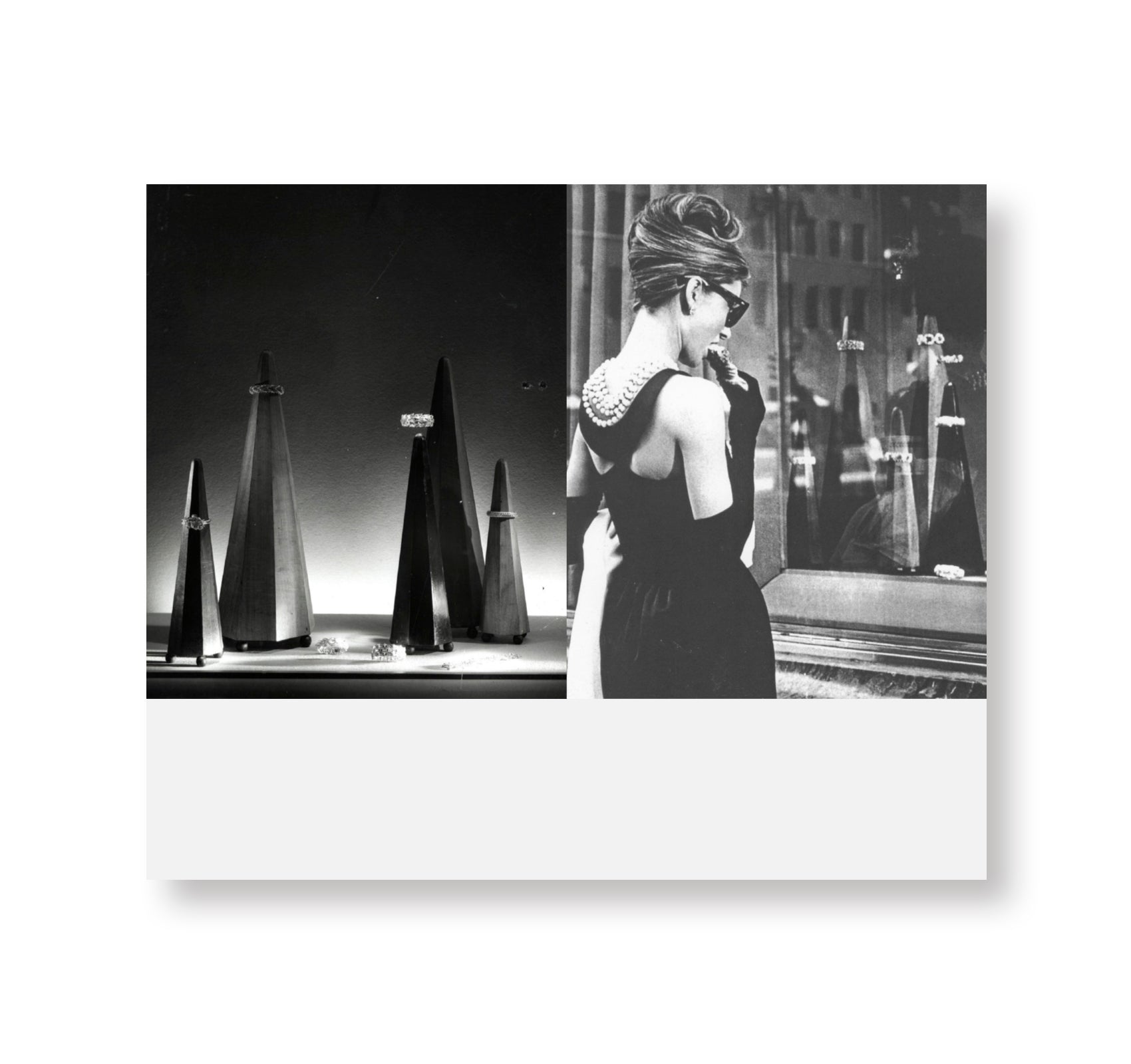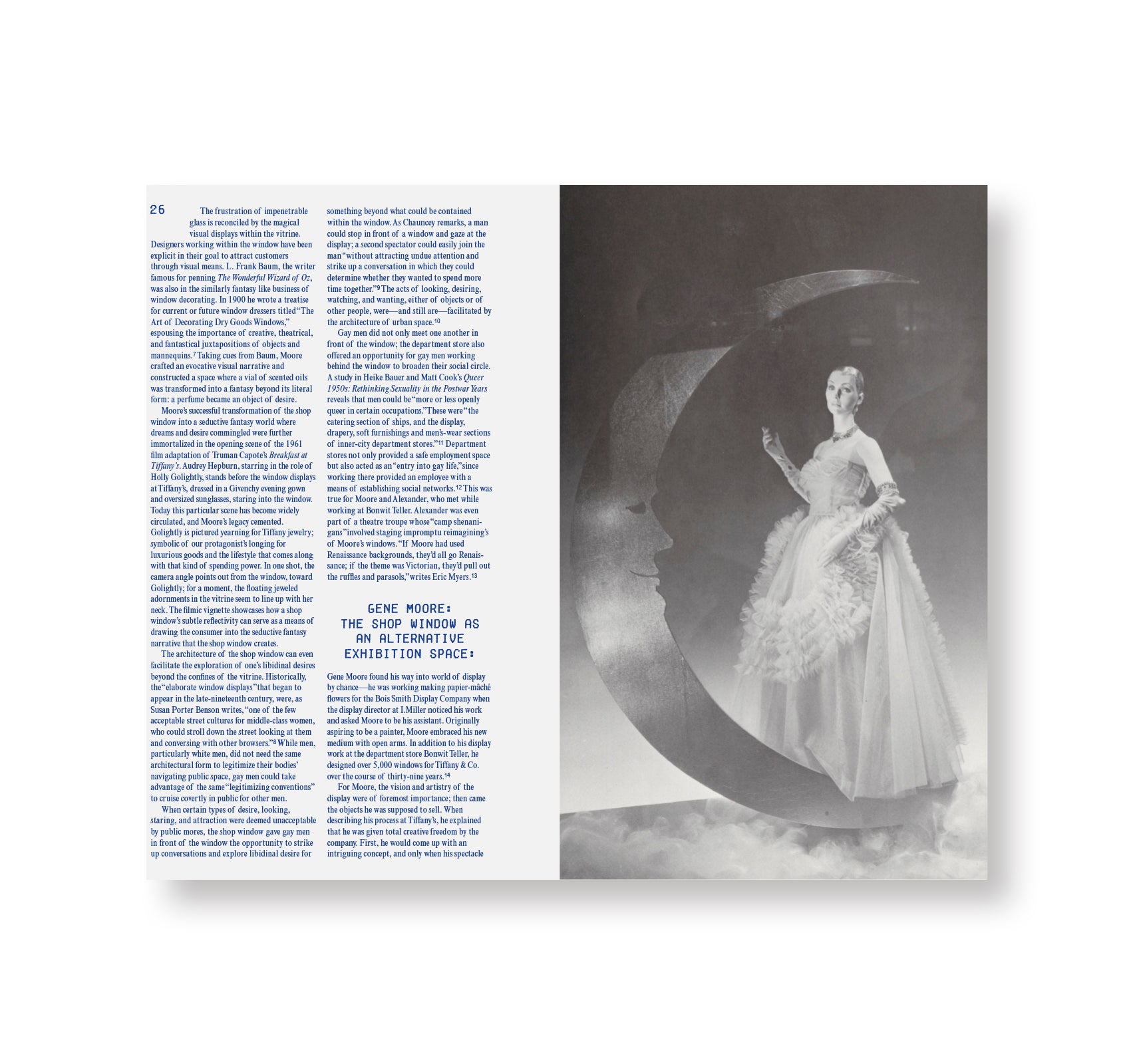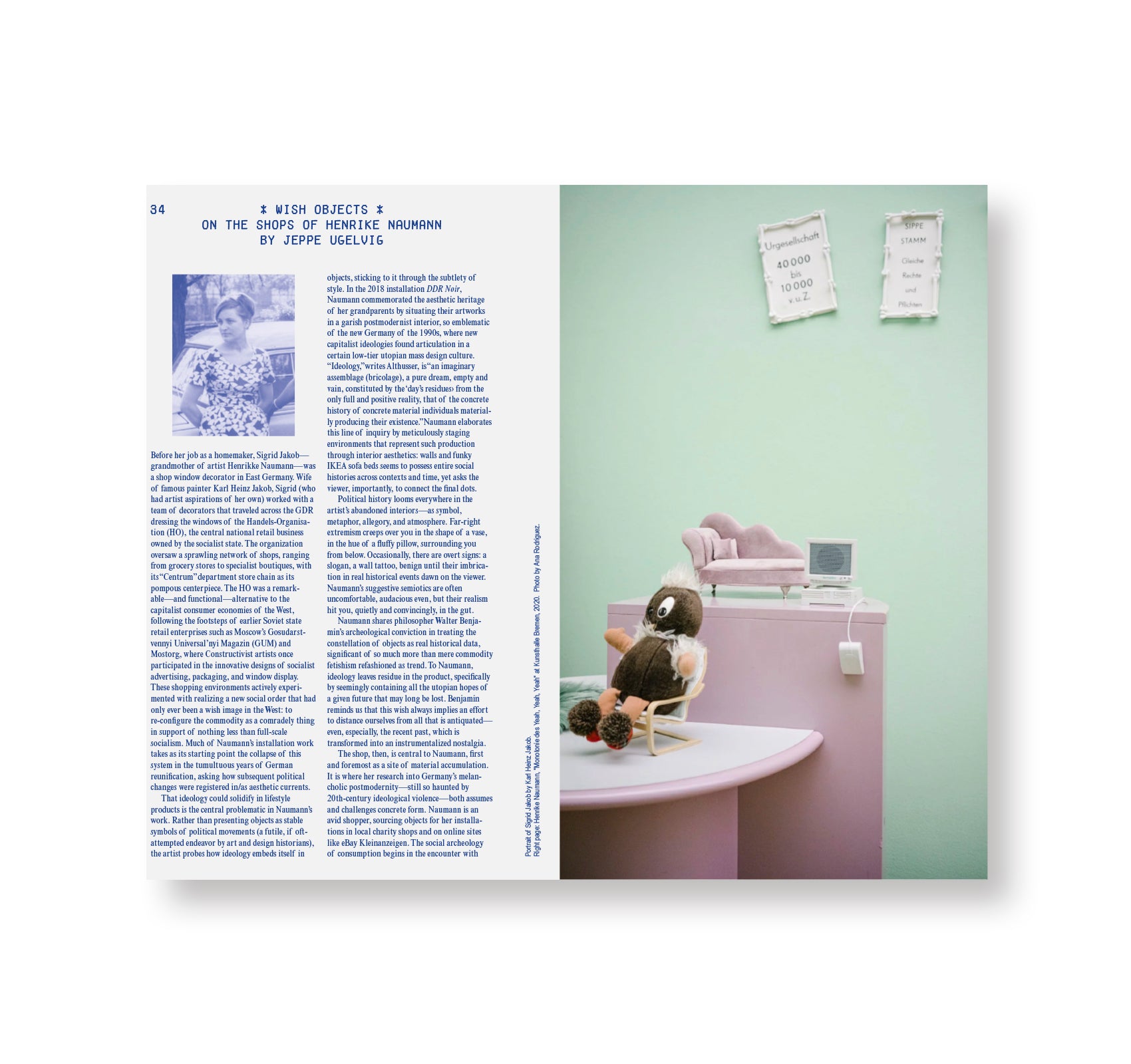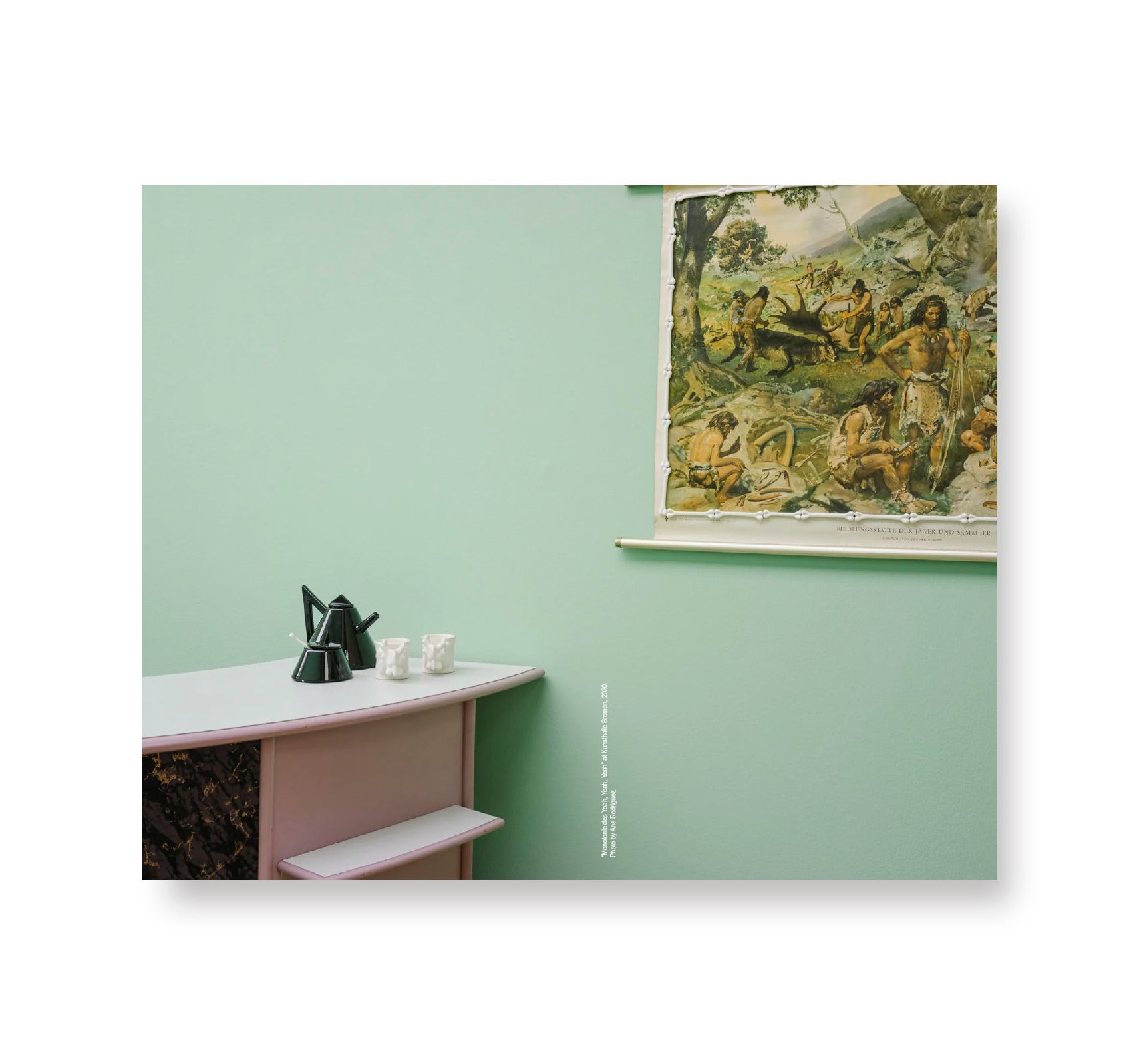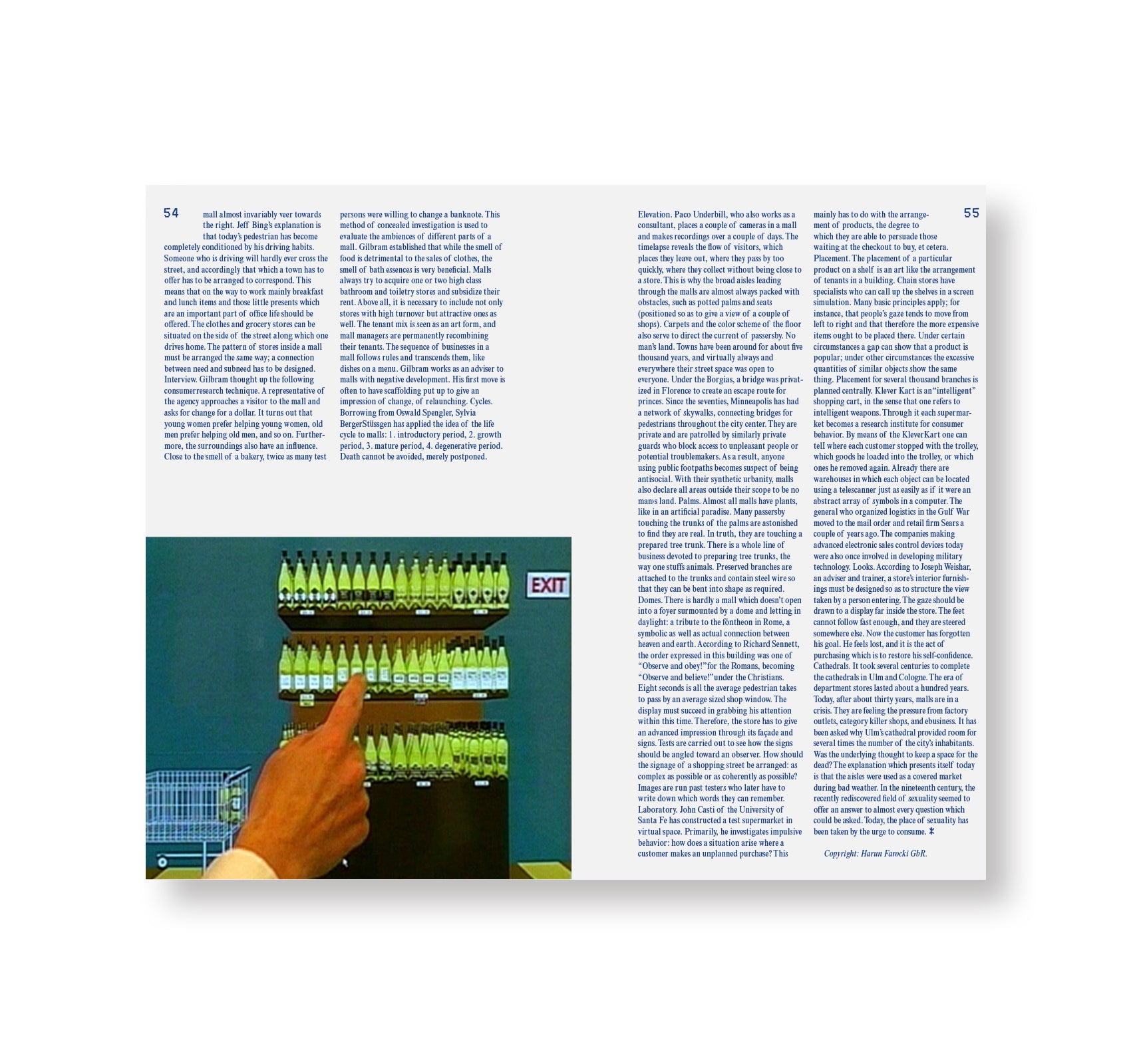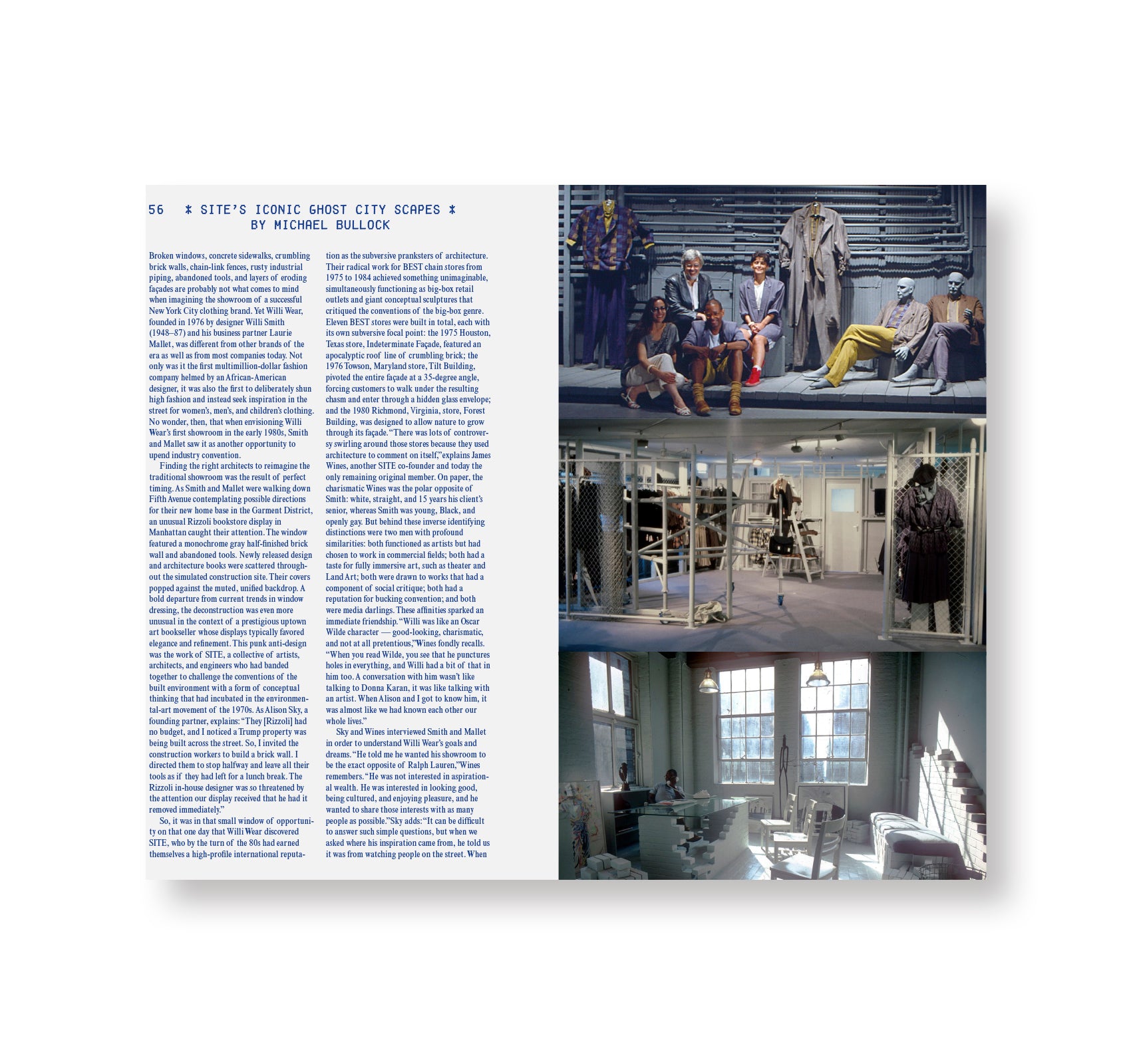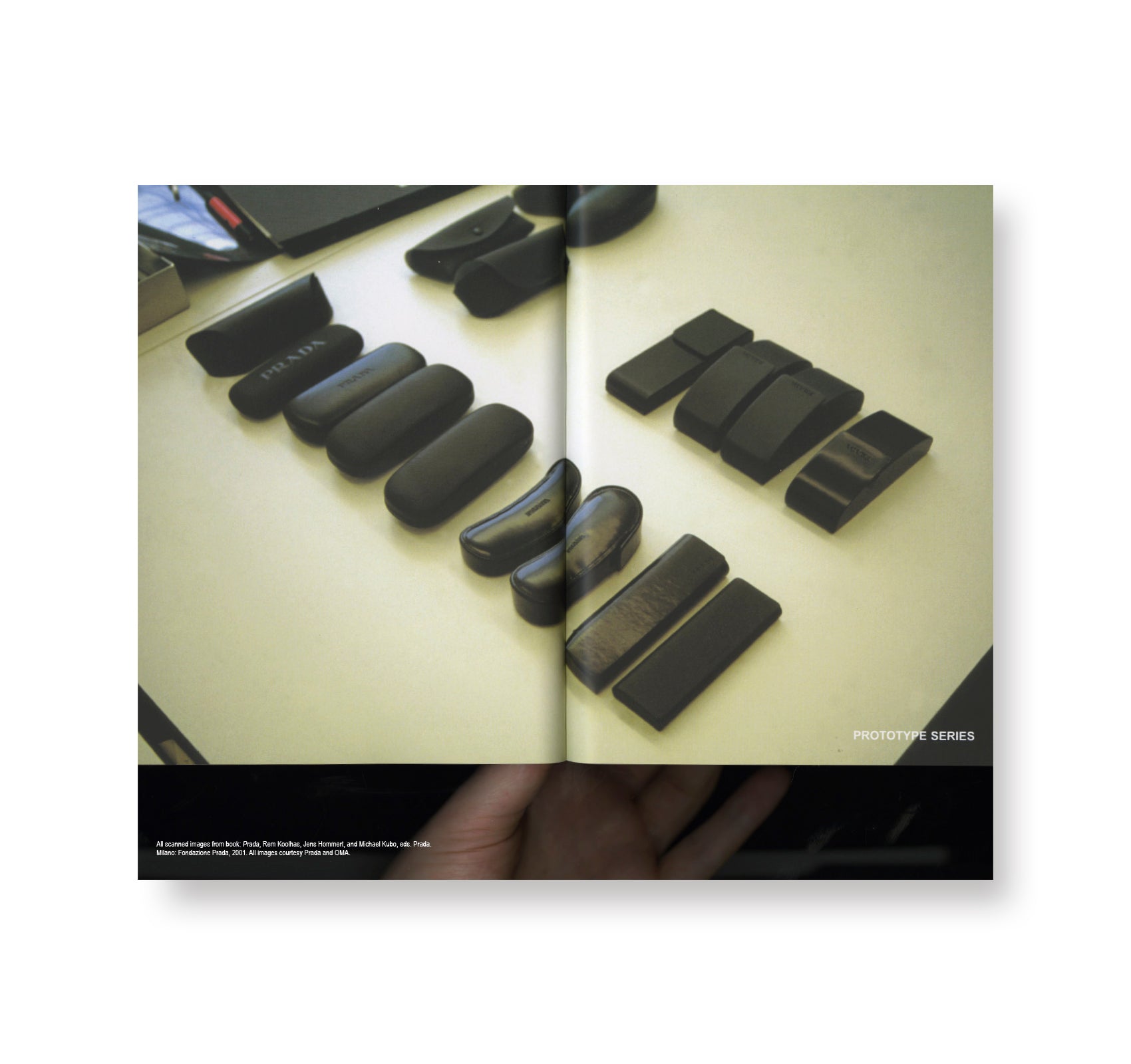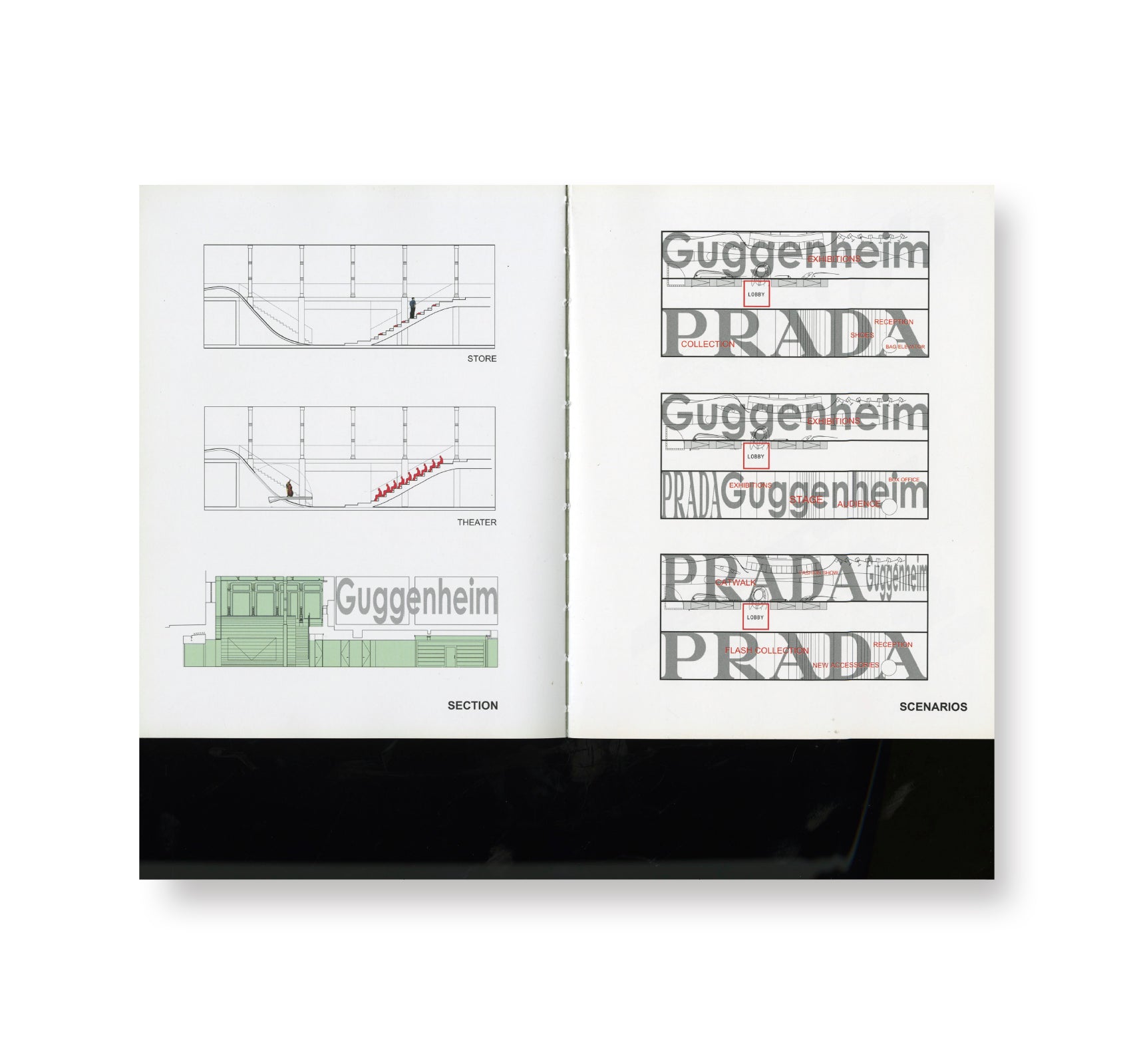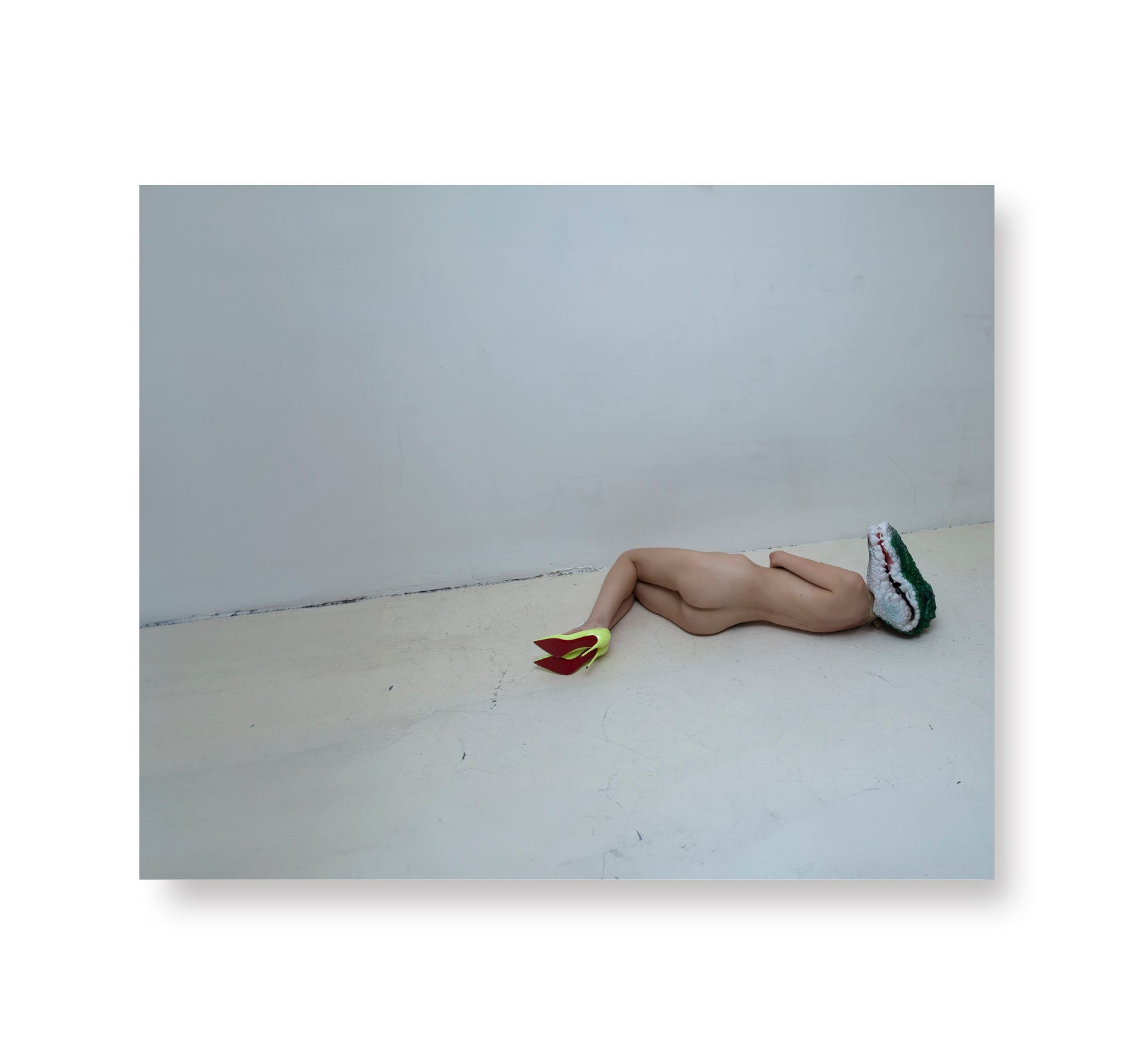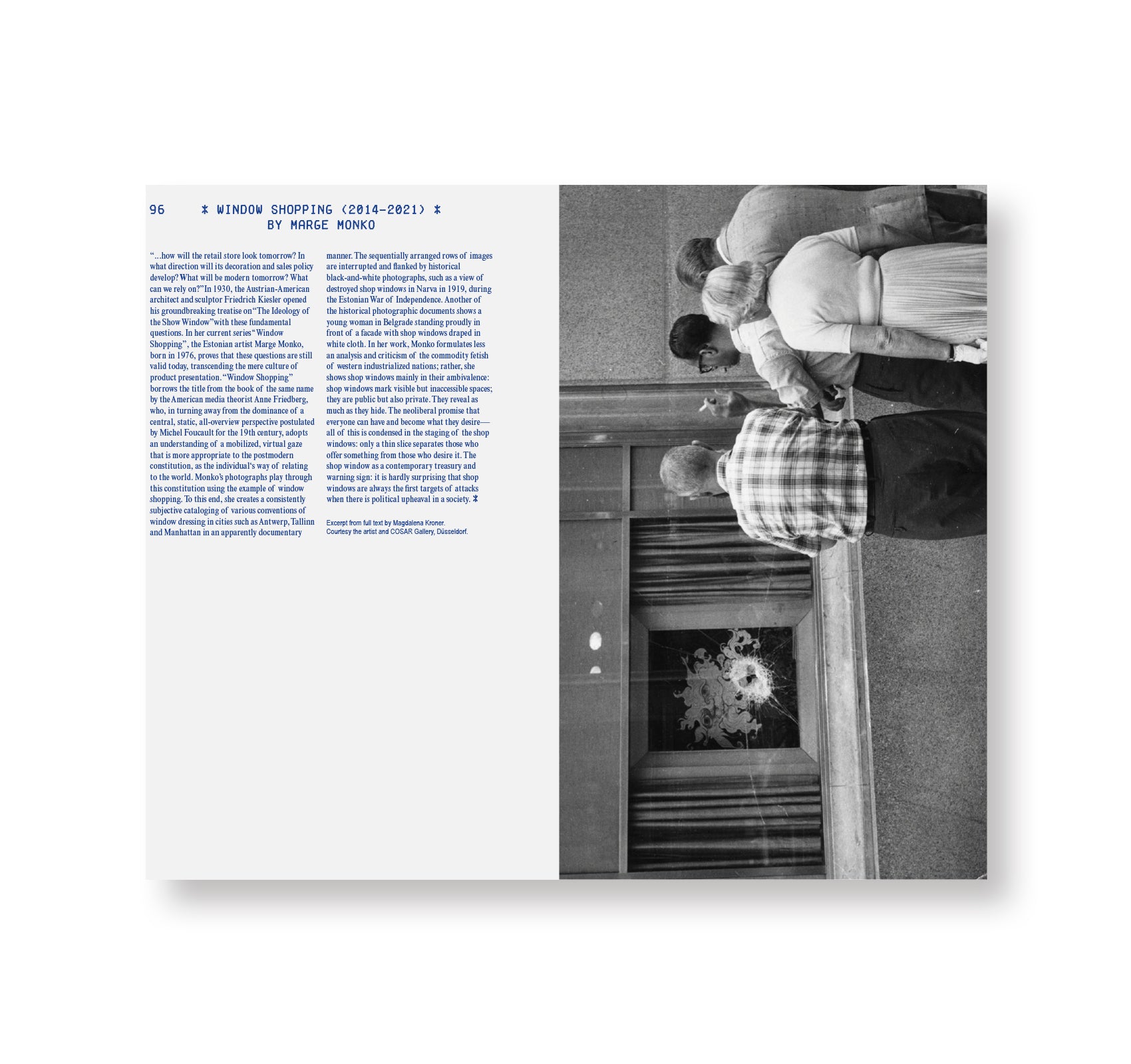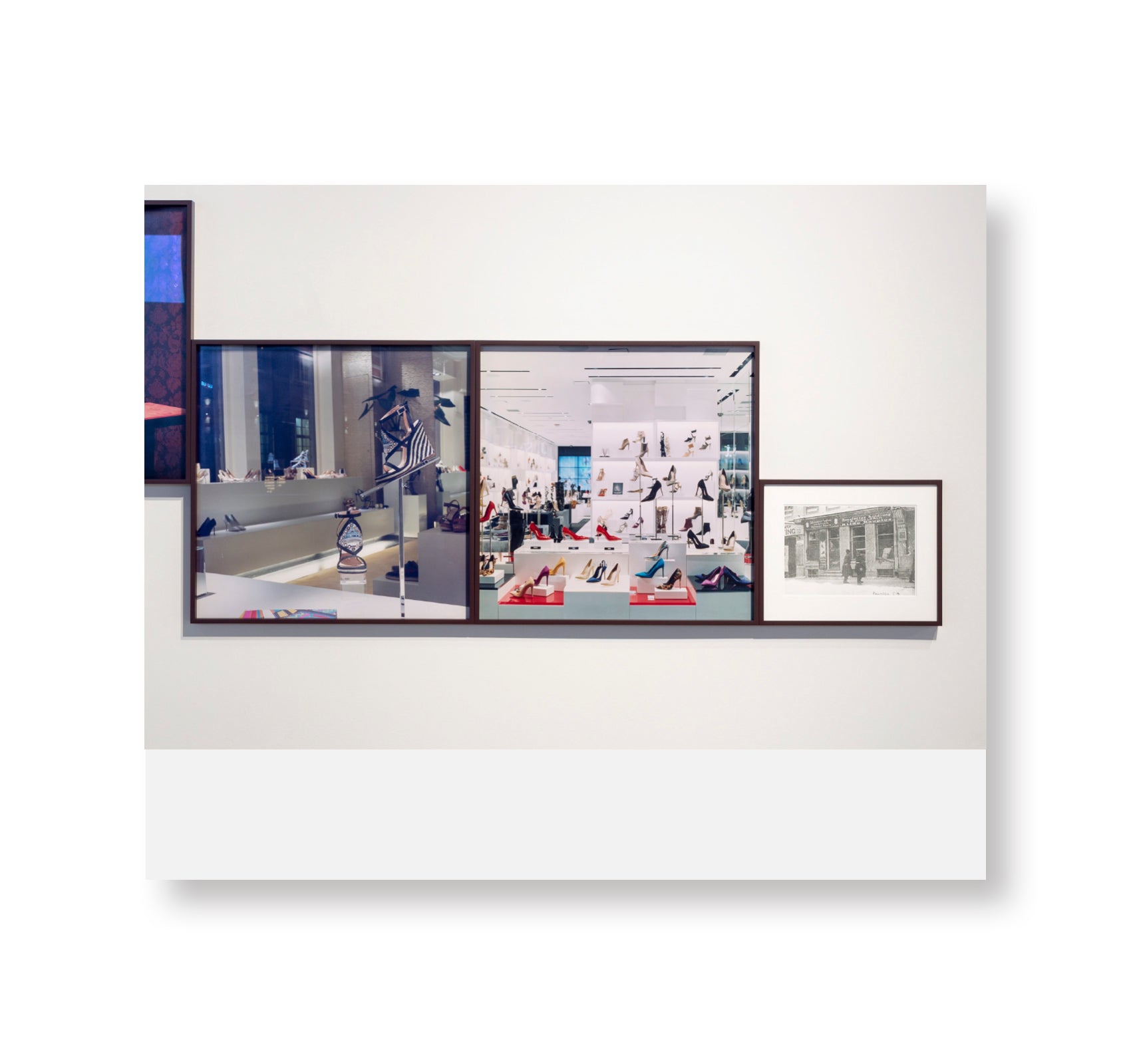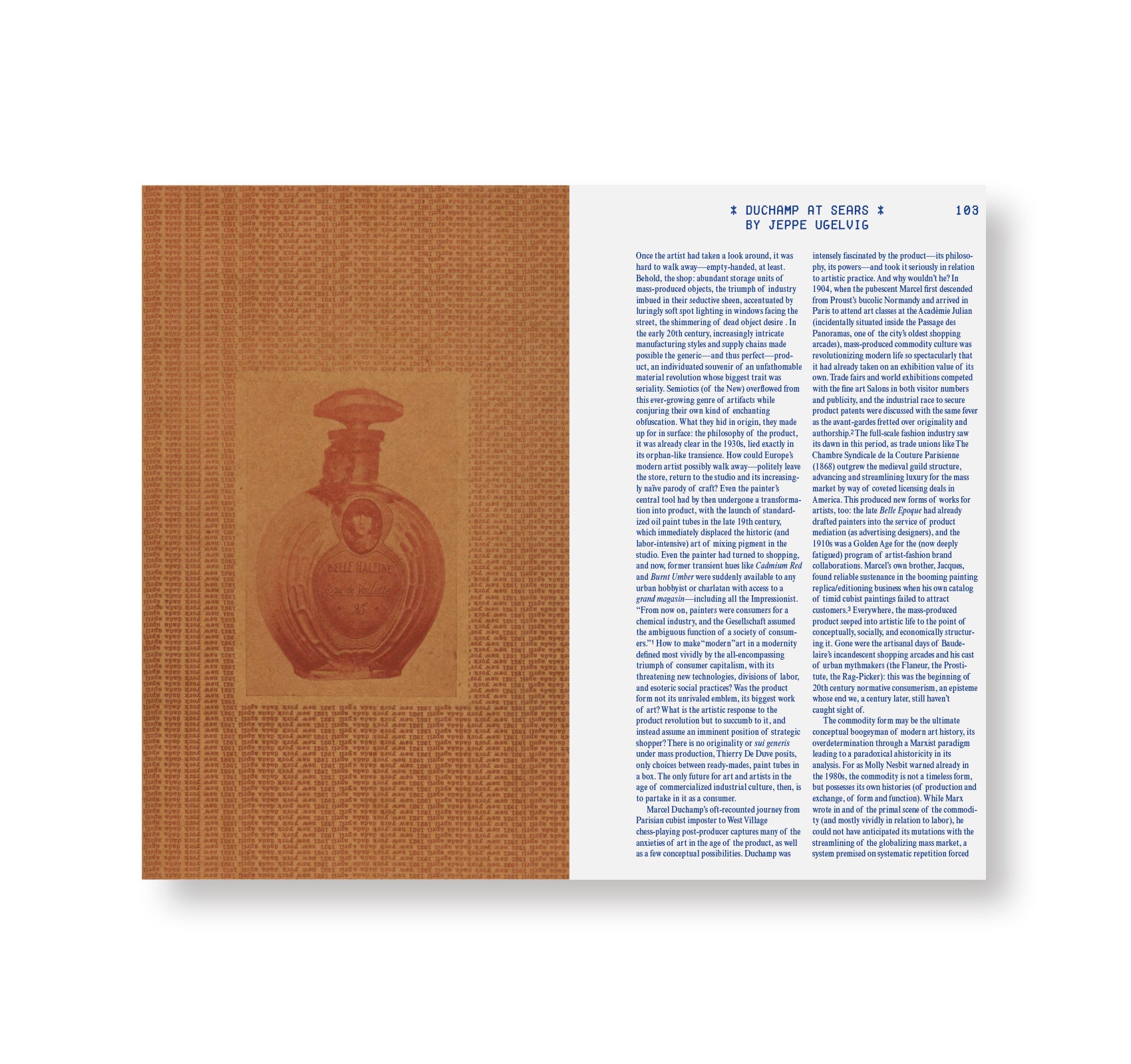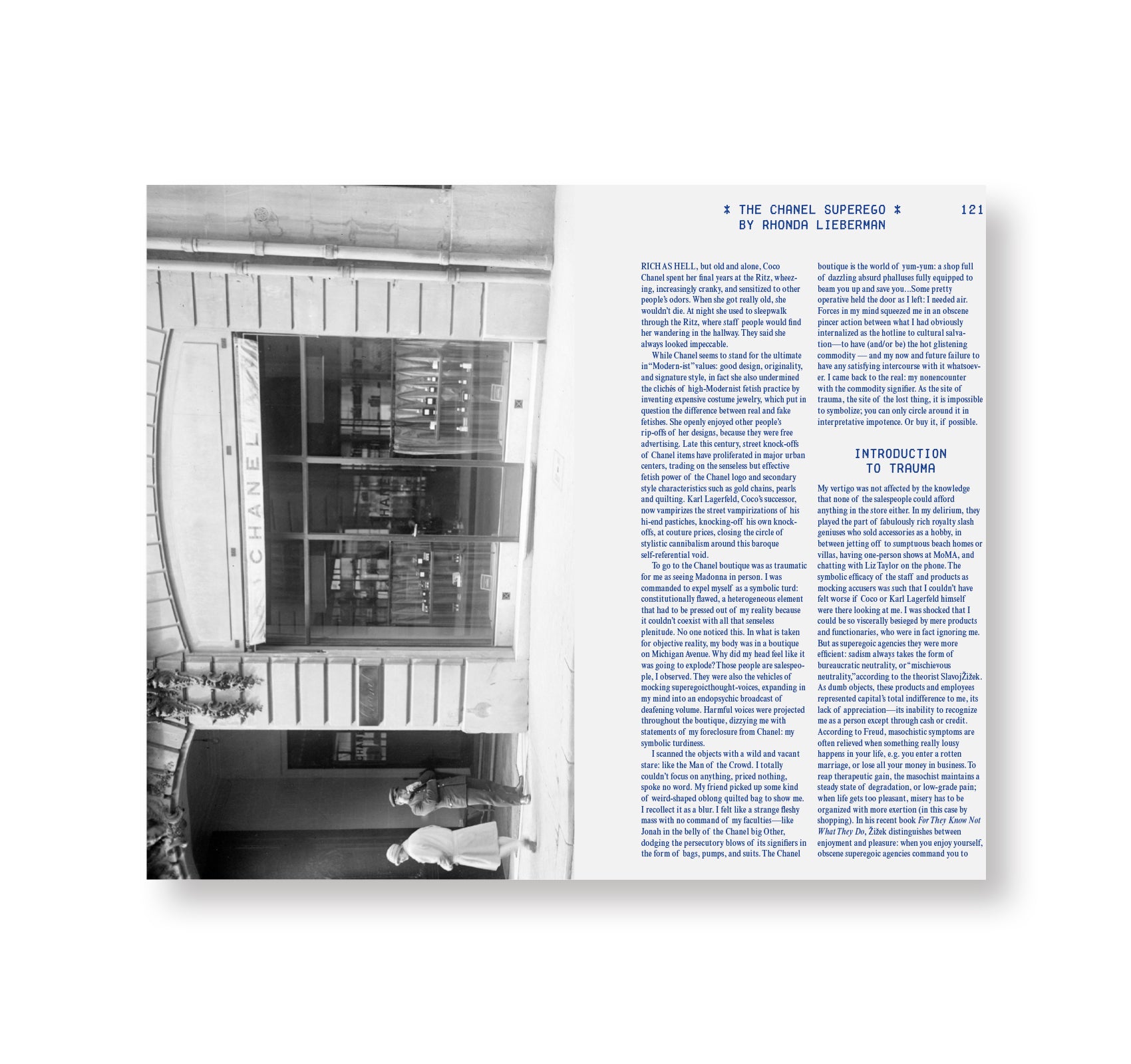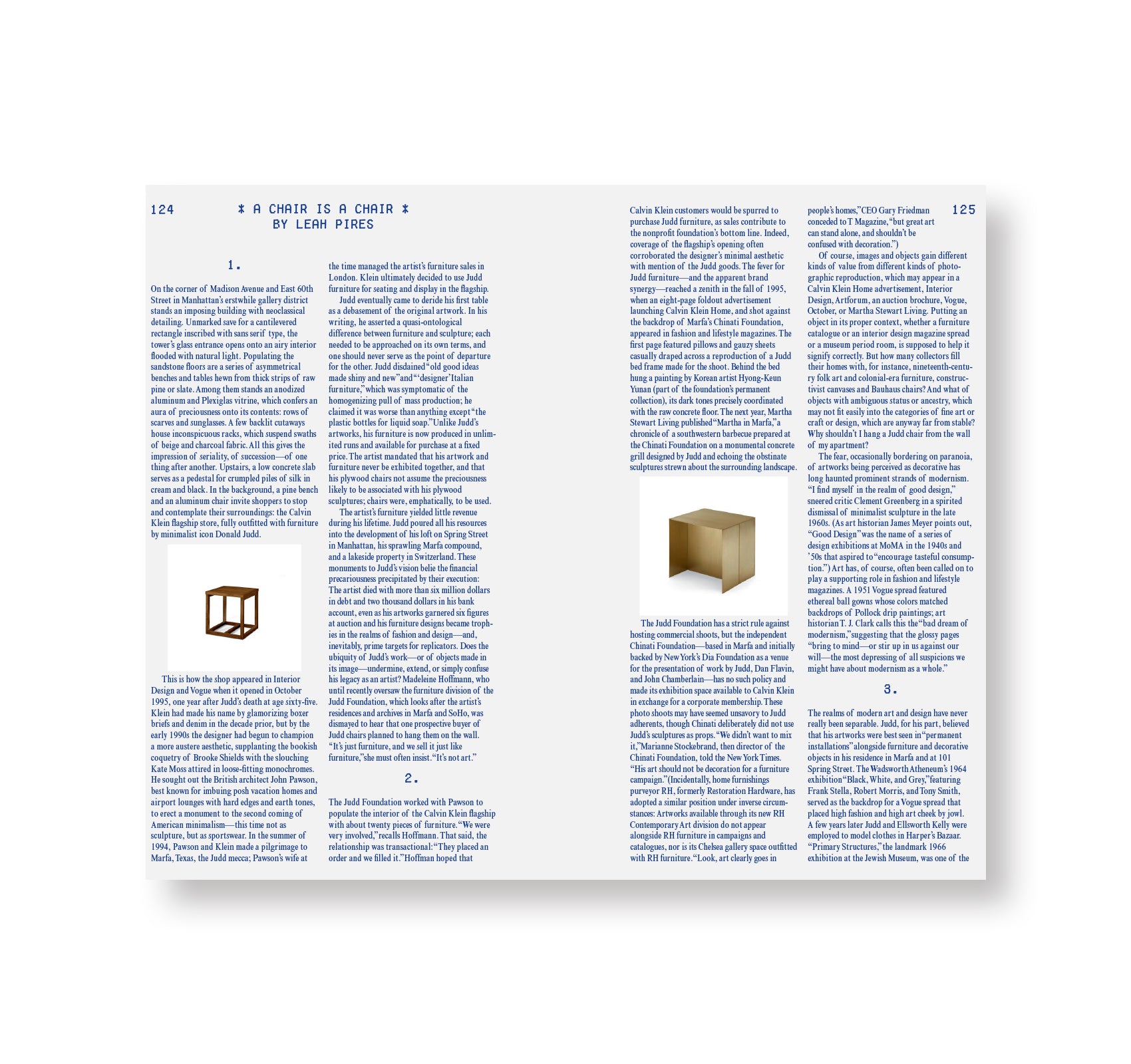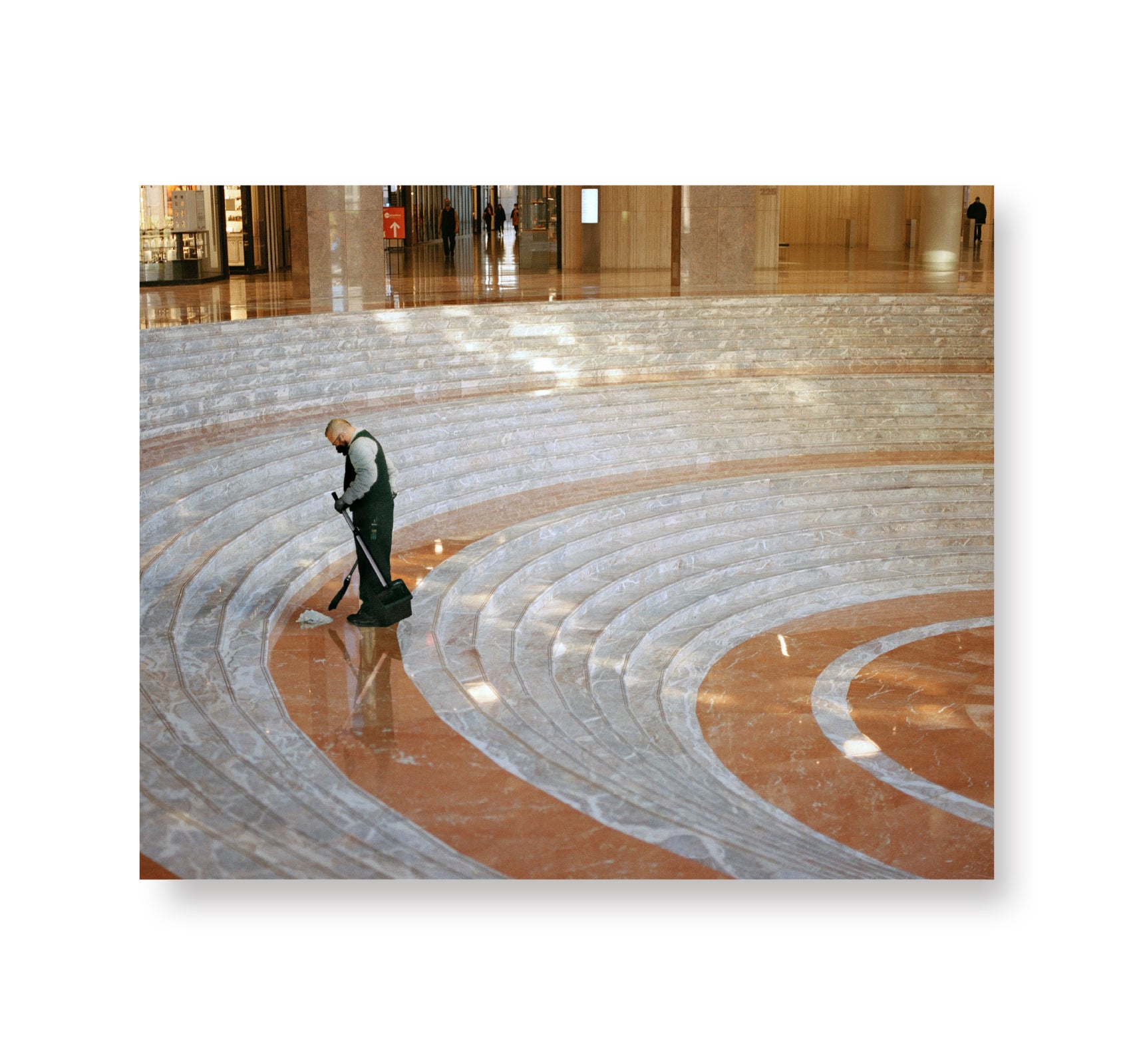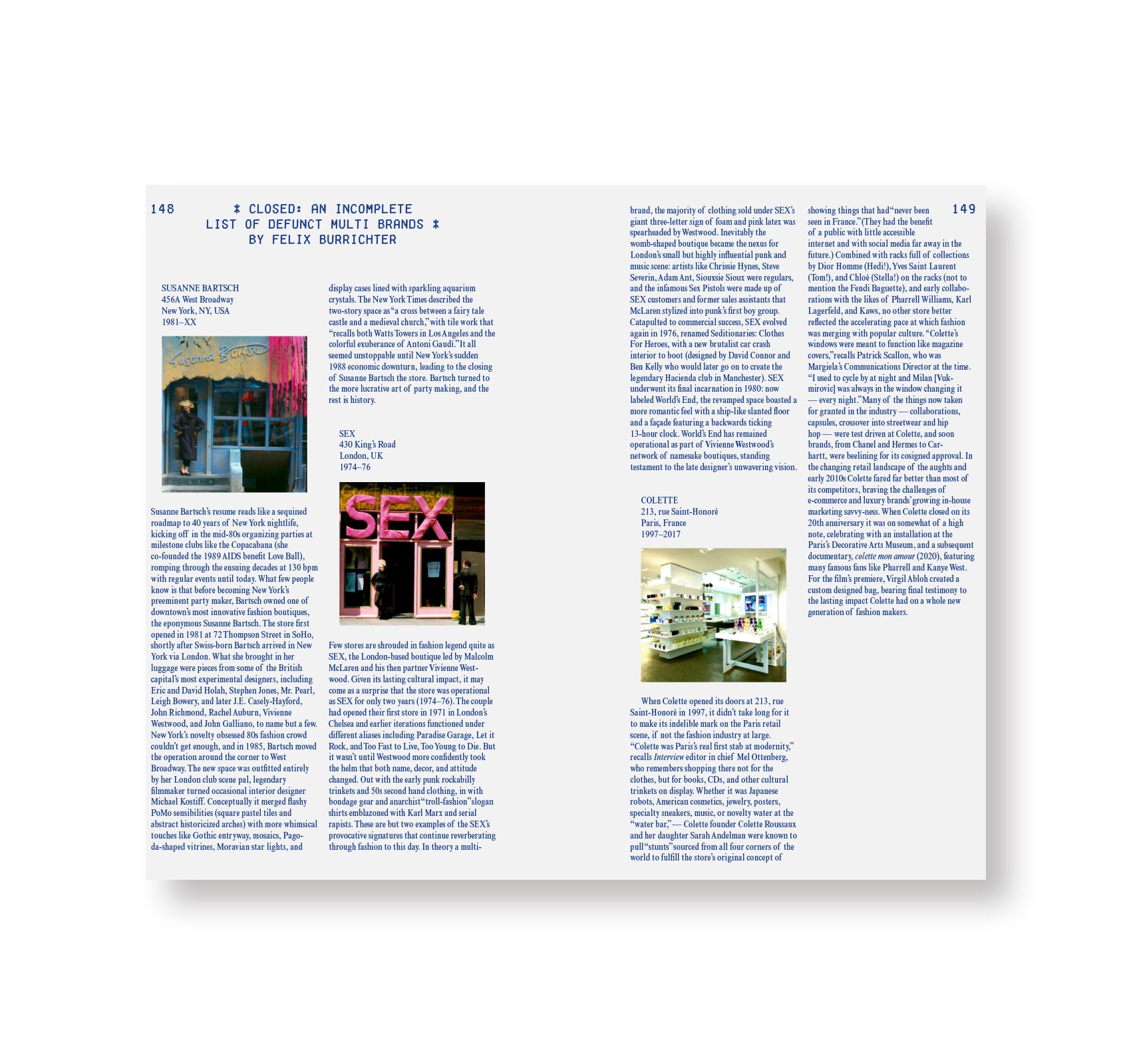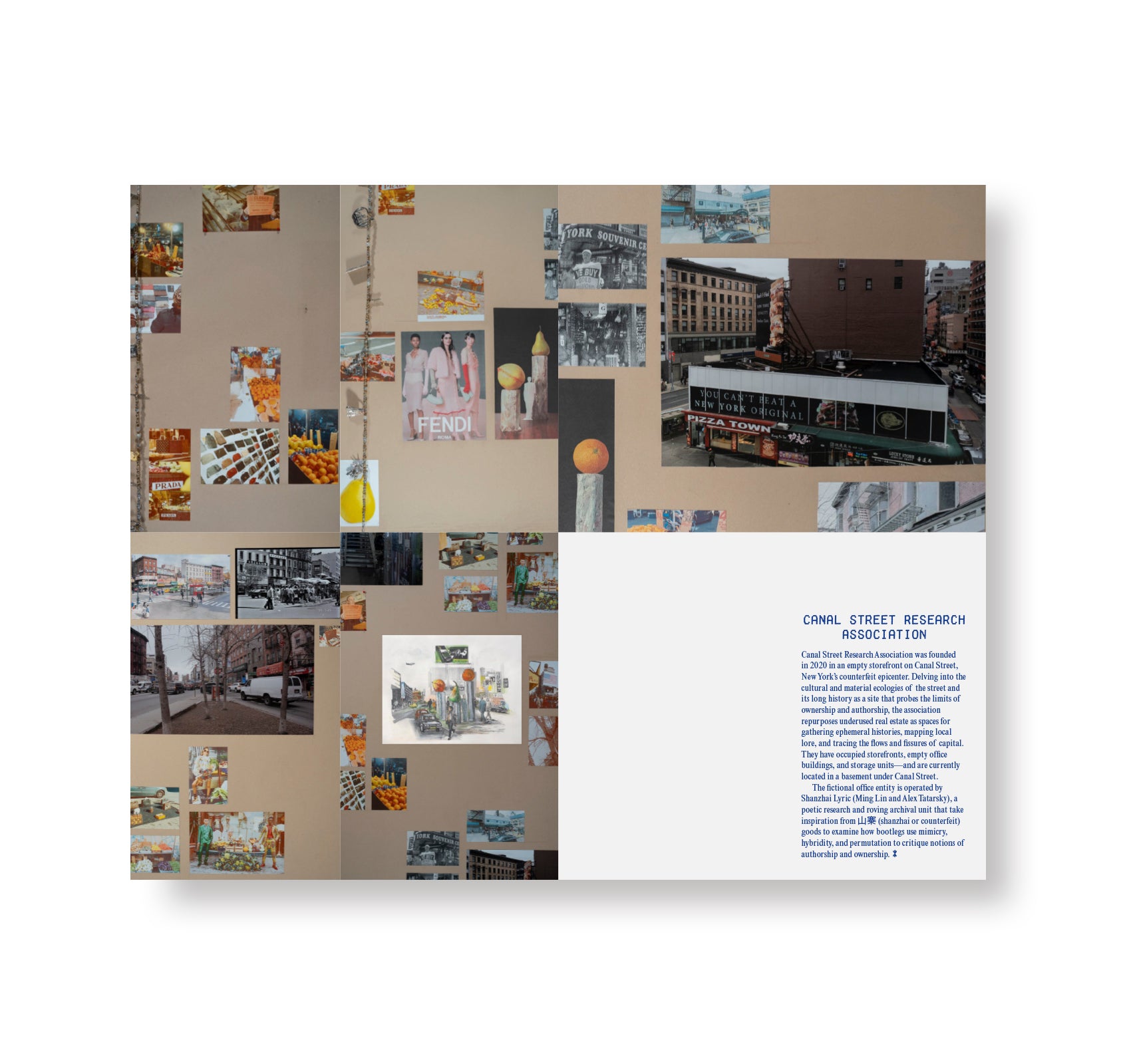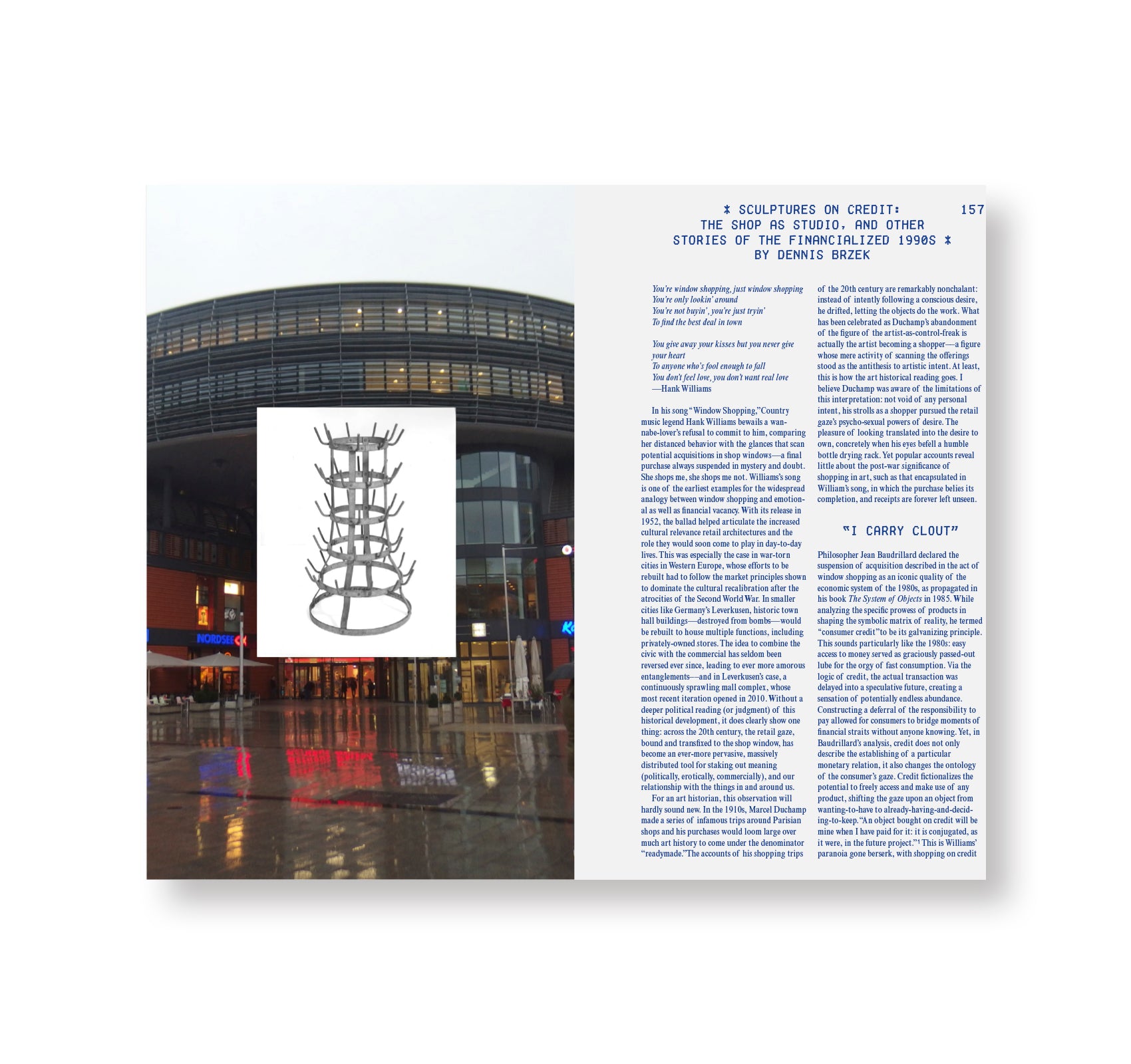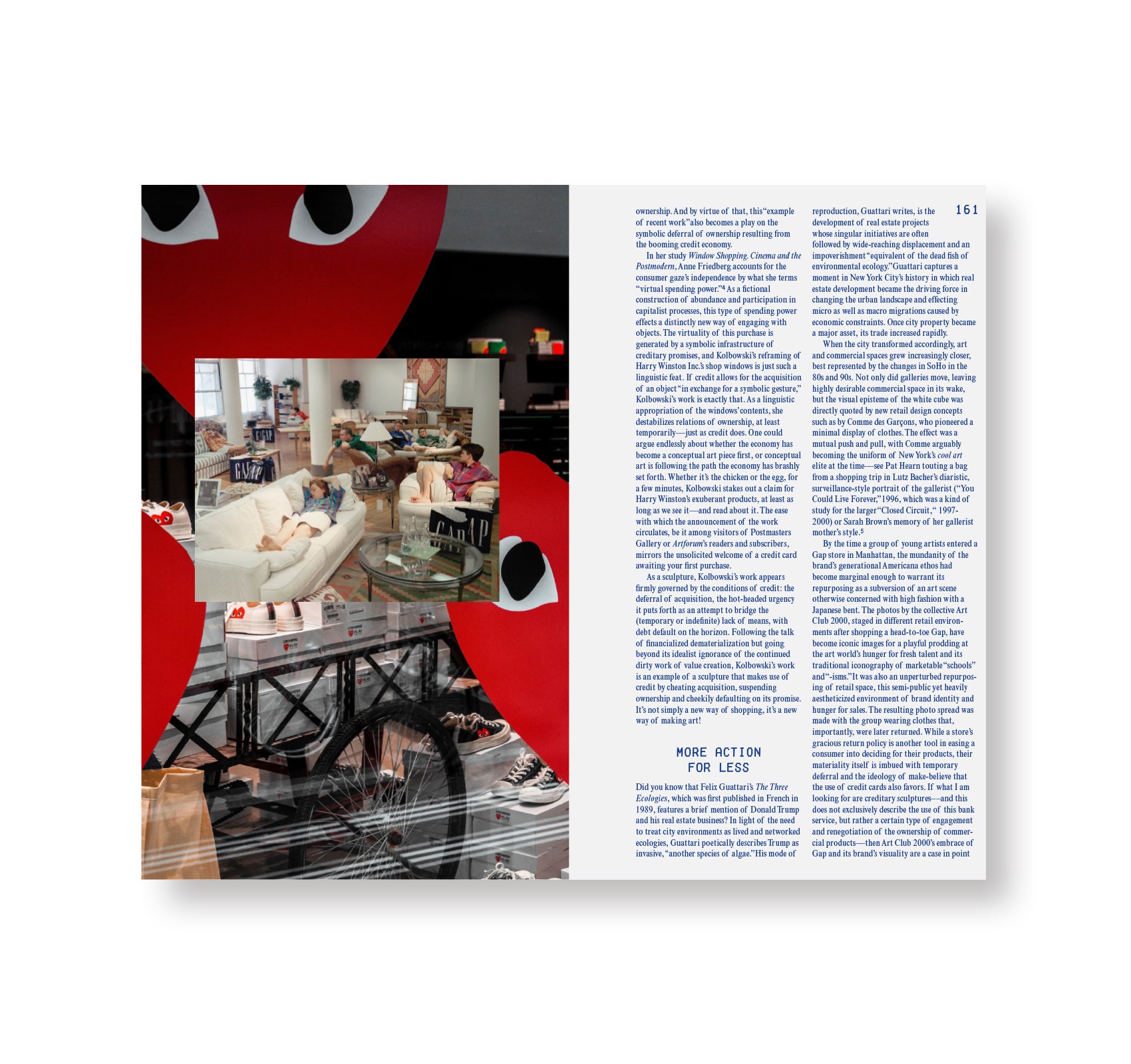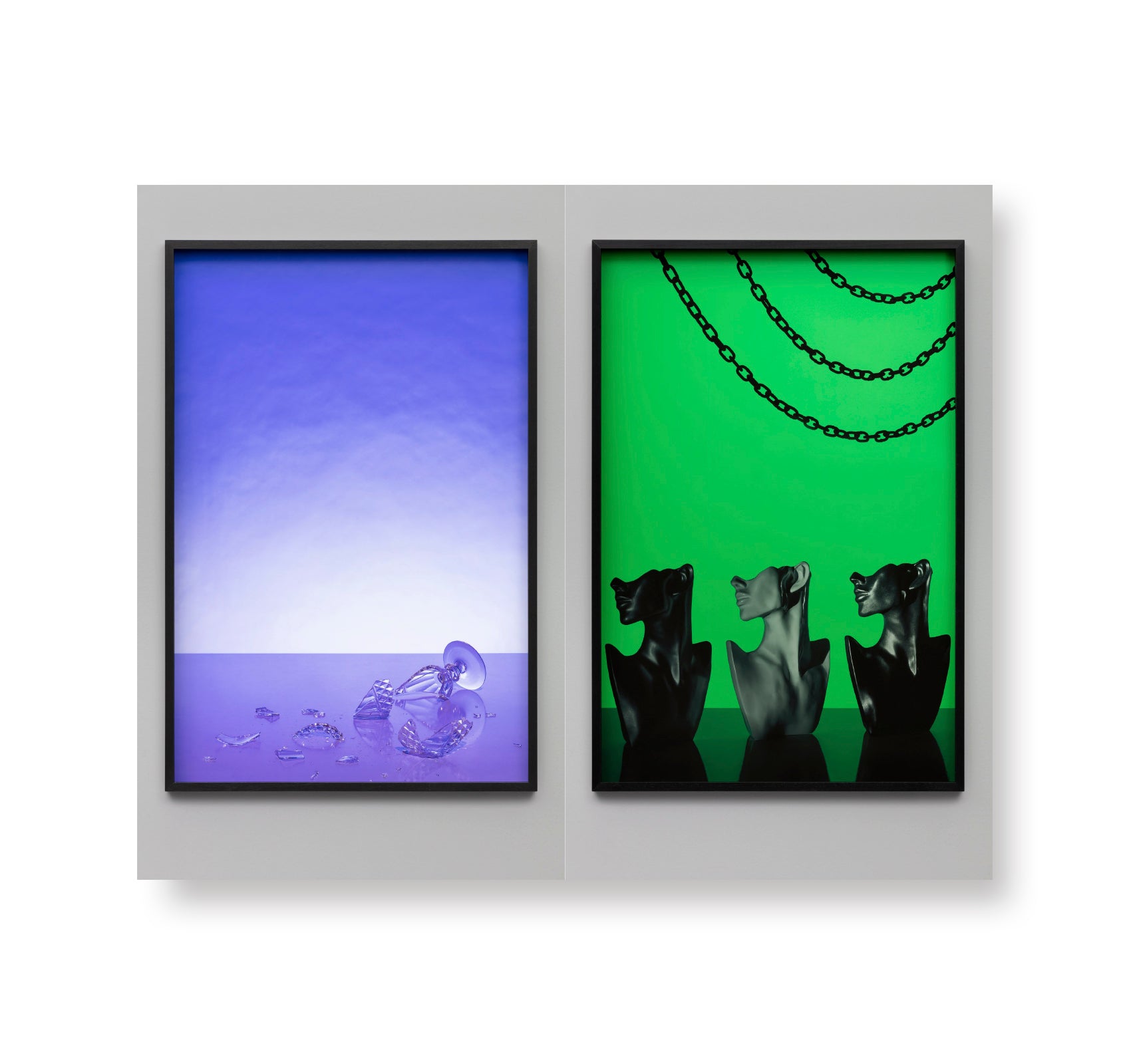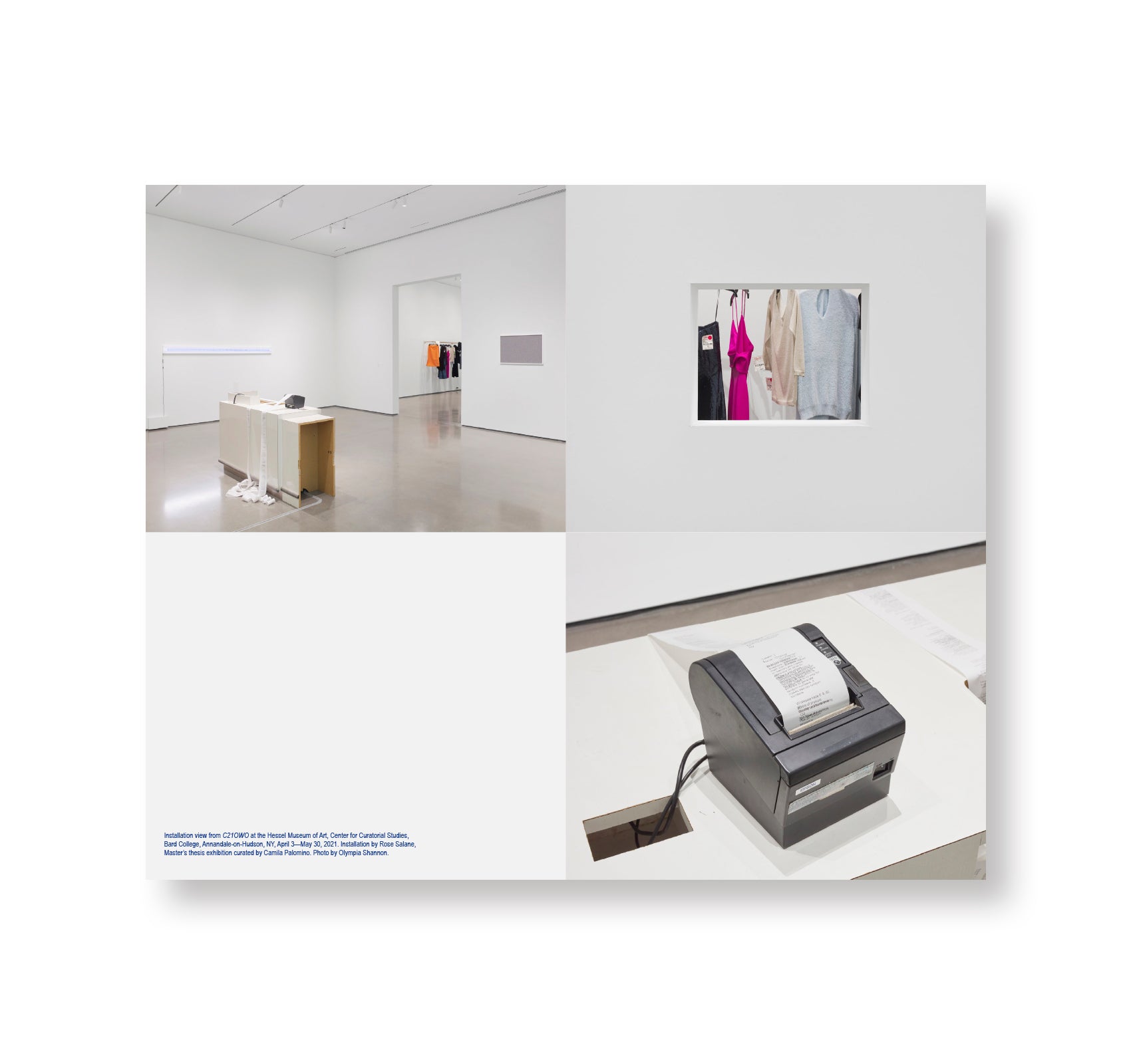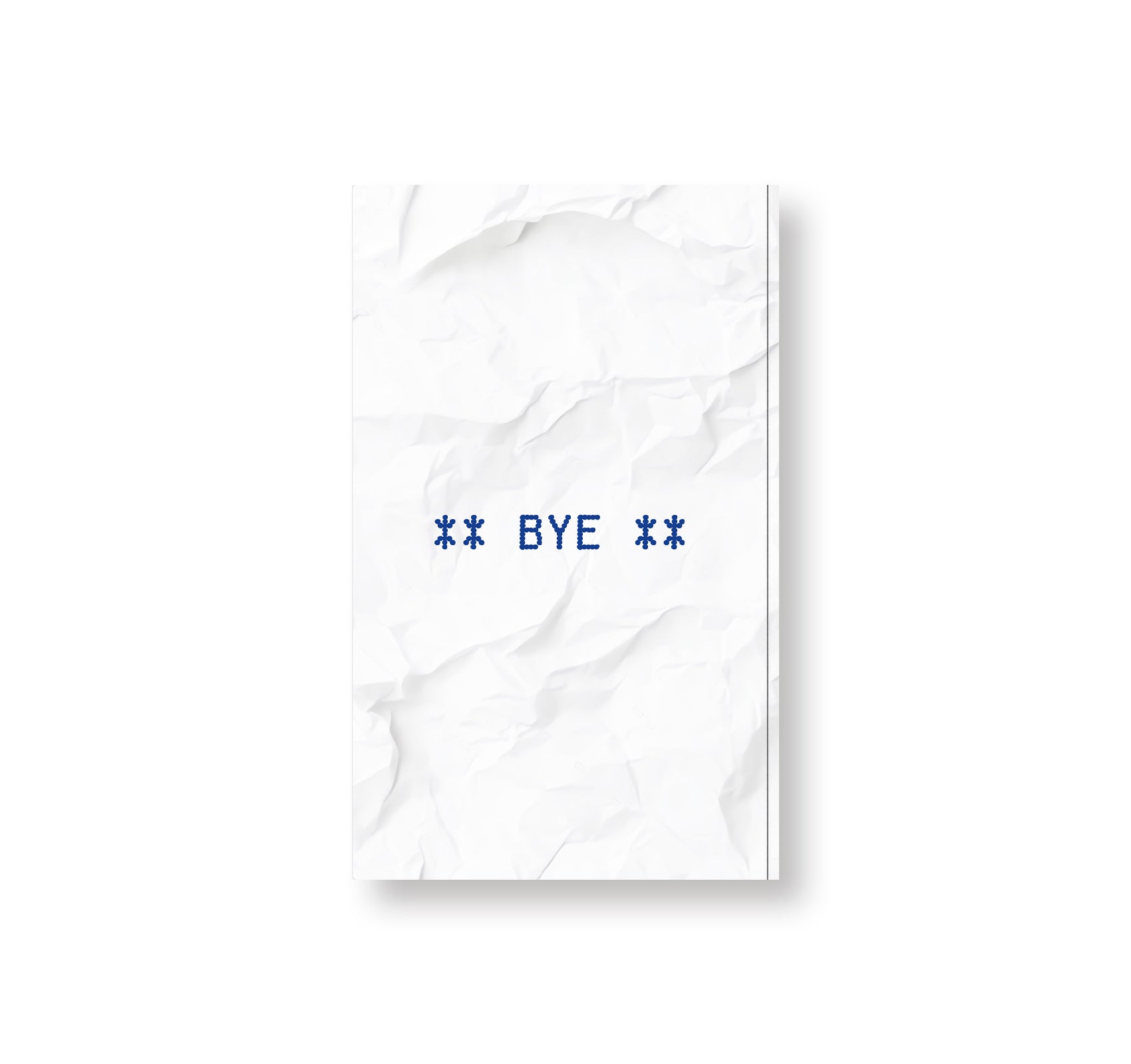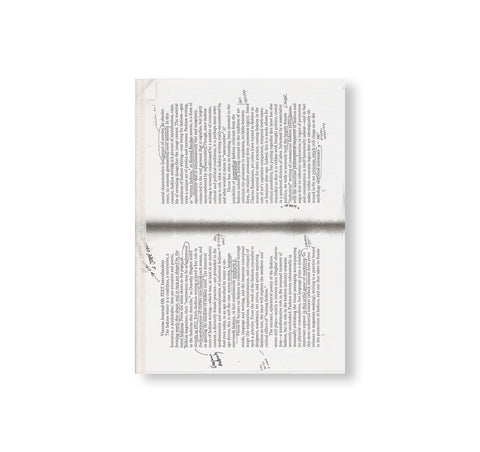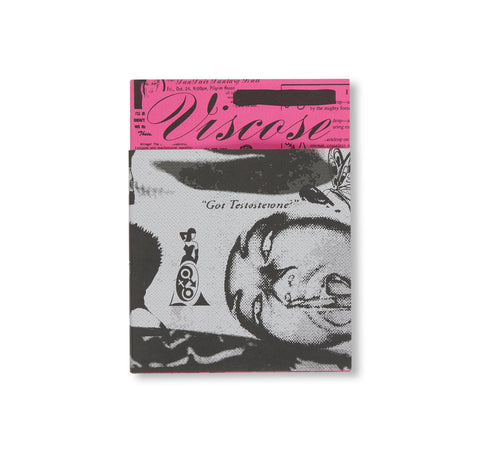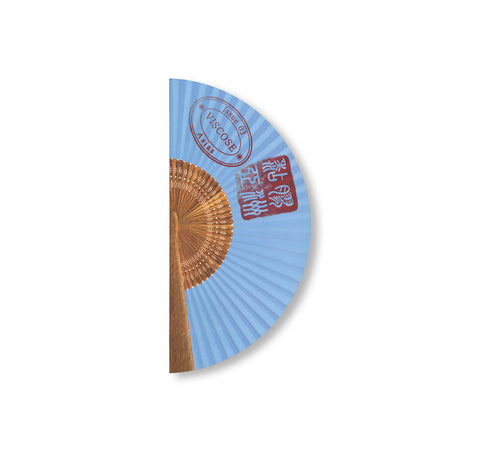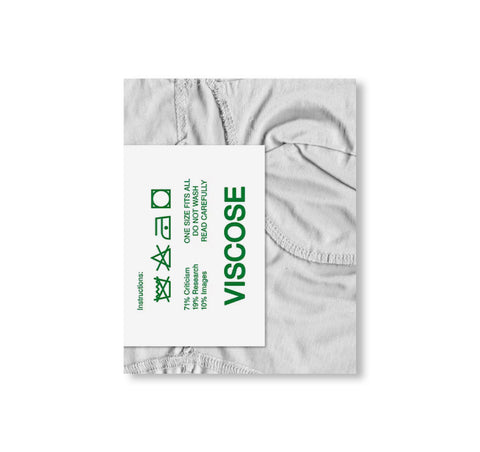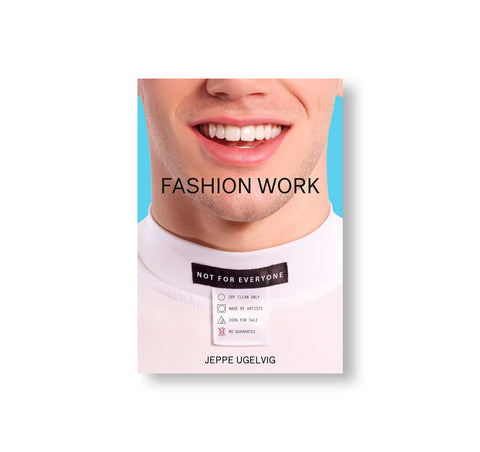VISCOSE JOURNAL ISSUE 05: RETAIL
2021年にニューヨークとコペンハーゲンを拠点に始動したファッション批評誌。ファッション・アートスカラーでありキュレーターのイエッペ・ウゲルヴィグ(Jeppe Ugelvig)が編集長を務める。毎号特定のテーマを掲げ不定期に刊行する本誌は、それぞれ異なる本の形式を採用し、ジャンルを超えた思考を提案することで、ファッションにおける研究、制作、また批評の可能性を拡げることに挑んでいる。あらゆる領域、産業、場所の孤立化を拒みつつ、世界中の知的なファッションコミュニティを対象に発信する。また、研究機関や美術館などと共同で研究を進めることで、広告を掲載することなく刊行を続けている。
第5号である本書は、ファッションの多面的な小売(RETAIL)空間と文化を探求する。20世紀と21世紀におけるショッピングの進化を中心に据え、コミュニティとアイデンティティが商業を通じて絶えず生み出され、再構築される中心的な結びつきの場としての店舗に光を当てる。都市空間のポリティクスにおけるファッション小売業の役割に特に注意を払いつつ、アーティストと共に、あるいはアーティストによって開発されることが多い、可能性と論議の表現手段として店舗を採用してきたプロジェクトの歴史を探る。
小売業はファッション生産の中心的な場である。ファッション製品の本能的な資本主義経済の範囲が明らかになるのは、店舗、ショッピングモール、オンラインショップにおいてである。それは、何世紀にもわたって商品フェティシズムとして理論化されてきた欲望であり、交換の循環に入ったモノに与えられる魔力である。このため店舗は、ファッションの最も古い儀式の舞台であり、資本主義的近代の代名詞になっている。
ショッピングのための空間は前世紀の間に加速度的に変化し、ショッピングモールやデパートへと変貌を遂げ、ますます壮大になる「消費のための建築」で構成された新しいタイプの公共空間を再構築してきた。物理的な空間を必要とし要求する公的な活動であるショッピングは、本質的に深く政治的な社会関係を生み出し続ける。言い換えれば、ジェンダー、階級、ジェントリフィケーション、監視、警察権力など、あらゆるものが商空間において生産され、再生産されているといえる。
資本の再生産に特化した空間である小売業は、正式なものであるか否かを問わず、物理的なインフラに組み込まれ、消費者の内面で具体化された紛失防止とセキュリティのシステムを必要とする。そのため小売業は、たとえどんなに平凡でつまらないものであっても、政治的な論争、逸脱、抵抗の場として理解することができる。
我々は、店舗の死、小売の終焉、デジタル化など、さまざまな危機や革命が宣言された後の小売業を研究している。しかし、実店舗型のファッション消費はいくつもの時代を経ても死滅することなく、外観と機能の両方を変化させ、積極的な体験経済における洗練されたブランディングスペースとして機能するようになった。現代に生きる我々が目にし、知る小売業は、都市と地方、虚像と不可視といった対照的な空間の間で絶えず変化する関係を巧みに切り抜け、社会の他の場所で採用されるインフラの見本をしばしば生み出しているのだ。
本書は「Storefront for Architecture」や「Between Bridges」などの援助により刊行された。
The fifth issue of Viscose explores fashion’s multifaceted retail spaces and cultures. With the evolution of shopping in the 20th and 21st centuries as its focus, the issue looks at the shop as a central nexus where communities and identities are continuously produced and re-imagined through commerce. With a special attention to the role of fashion retail within urban spatial politics, we seek out histories of projects—often developed with or by artists—that have embraced the shop as a medium of both possibility and contestation. Retail is a central site of fashion production. It is in the store, mall, and e-shop that fashion products reveal the extent of the libidinal capitalist economy—a desire that has been theorized for centuries as commodity fetishism, a magical power relegated to objects as they enter circuits of exchange. As such, the shop is a stage for fashion’s oldest rituals, one that has become synonymous with capitalist modernity. Over the last century, shopping spaces have accelerated and mutated, into malls and department stores, re-imagining new types of public spaces structured by increasingly sublime architectures of consumption. As a public activity that demands (and thus commands) physical space, shopping continues to produce social relations that are deeply political in nature: gender, class, gentrification, surveillance, and police power are all ambiently produced and reproduced within retail spaces. As spaces dedicated to the reproduction of capital, retail necessitates systems, both formal and informal, of loss prevention and security that are embedded in physical infrastructure and embodied within consumers. As such, retail can be understood as sites of political contestation, transgression, and resistance, however quotidian or slight they may seem. We are studying retail in the aftermath of various proclaimed crises and revolutions—store death, retail apocalypse, digitization. Yet through these times, brick-and-mortar fashion consumption has not died but instead morphed in both appearance and function, serving today as sophisticated branding spaces in an aggressive experience economy. Retail, as we see it and know it in our contemporary moment, manically negotiates the ever-shifting relationship between contrasting spaces—urban, rural, virtual, invisible—and often prototypes infrastructures that are then adopted elsewhere in society. Welcome to Viscose 05. We are grateful for the support of our co-publishers, particularly Storefront for Architecture and Between Bridges, without whom this issue would not have been possible.
